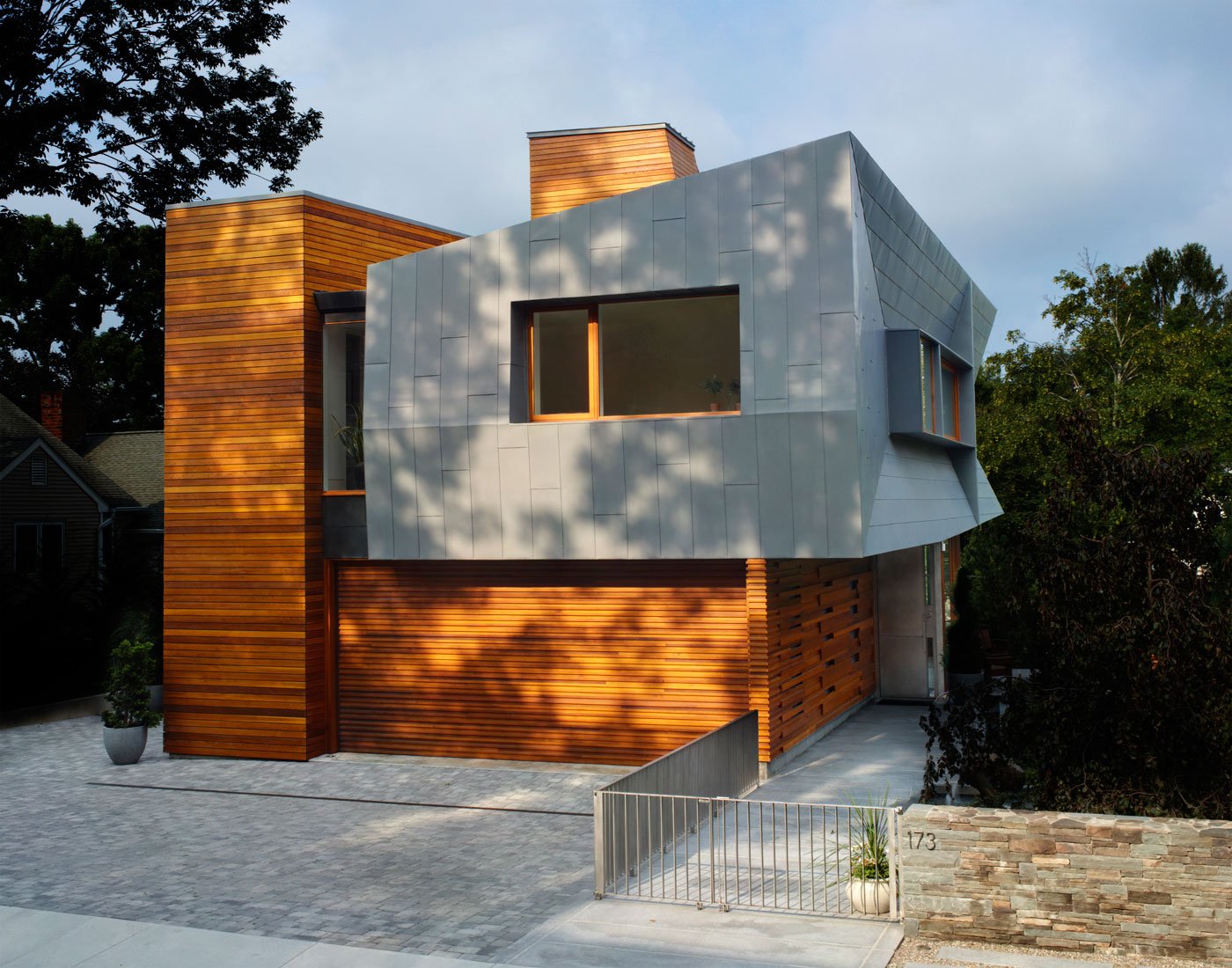#9485. Dualistic Facade: The Play of Wood and Metal Contrasts in Modern Architecture
Before us is an impressive example of modern residential architecture where the contrast of materials plays a key role in shaping the building's visual identity. The facade presents a harmonious combination of two dominant materials: warm horizontal wooden cladding (presumably cedar or teak) in a rich honey tone and cool metallic panels in a silvery-gray color with geometric divisions.
Compositionally, the facade is designed with distinct volumes, where wooden elements form vertical accents and the lower part of the building, including the garage doors, while the metal panels create a dynamic upper volume with a slight overhang and angled edges. The architect masterfully used contrast not only in materials but also in geometry — the linearity of the wooden sections is juxtaposed against the more complex form of the metal volume.
The window openings are laconic and carefully considered — on the main facade, a horizontal window with wooden framing creates a warm accent against the metal background. The play of light and shadow on the facade adds an additional dimension to the visual perception of the object, particularly noticeable on the wooden surfaces.
In designing one's own home, a similar approach combining contrasting materials can be an excellent solution for creating an expressive facade. The key techniques here are: clear division of volumes by materials, use of natural wood to create warmth and comfort, application of modern metal panels to form dynamic elements, and thoughtful minimalist window graphics. It's also important to pay attention to the proportions and balance between different materials to ensure that neither dominates excessively.
